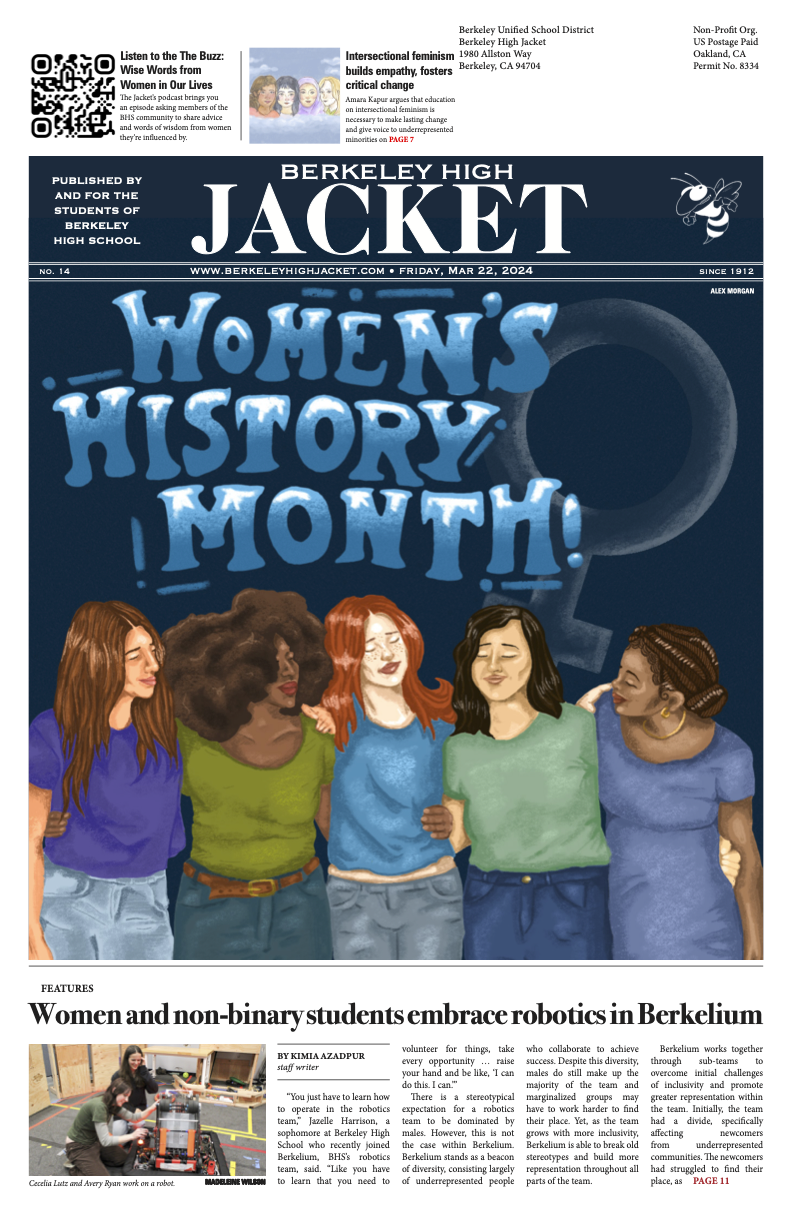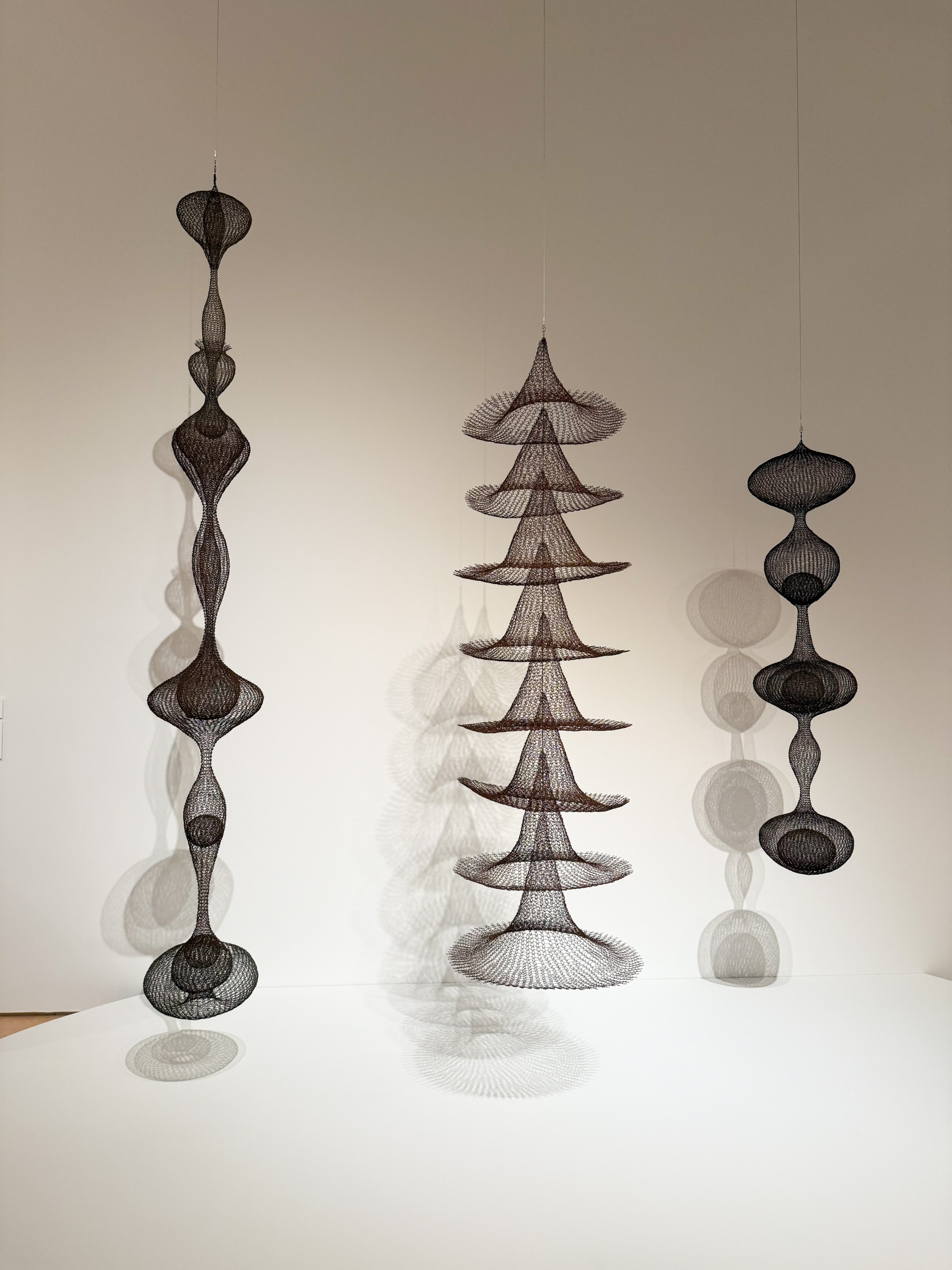Ruth Asawa, pioneering artist, educator, and civic leader was born to Japanese immigrant parents on Jan. 24, 1926 in Norwalk, California. Both of her parents were truck farmers, though under discriminatory anti-Japanese laws, they were not allowed to own land or become citizens. Her childhood during the Great Depression was marked by struggle, hardship, and poverty, though it was also spent in close contact with nature. The fourth of seven children, Asawa began working on the farm and around the house at six years old, while also going to school six days a week. Soon after, she began to enjoy art and the kind of peace it provided her to be alone and have the ability to daydream. She was soon recognized for her artistic talent. “I used to sit on the back of the horse-drawn leveler with my bare feet drawing forms in the sand, which later in life became the bulk of my sculptures,” Asawa said, describing how her early days impacted her art.
Her father was interned in Japanese internment camps during WWII when she was 16 years old. She did not see her father for six years. Asawa spent the next few years living in internment camps with the rest of her family, spending the first six months in horse stables, then in a permanent camp surrounded by barbed wire fences in Arkansas.
During her time in internment camps, Asawa spent a lot of time drawing. Towards the end of high school, she had a role as the art editor for her school’s yearbook. At university in Milwaukee, Wisconsin, she studied to be an art teacher, although racial discrimination prevented her from completing her degree.
Later, after encouragement from her friends, she pursued art at Black Mountain College in North Carolina, and lived in relatively uncomfortable conditions. Her time there had an immense impact on her life and art, and it was there that she met her future husband, architect Albert Lanier. She used natural, unconventional materials in her art as a byproduct of working on a lower budget. Later, she started a life with her husband in San Francisco, where she raised six children and created lasting friendships with photographers. She became more active in the San Francisco community in the 1960s and led sculpting lessons. Asawa also advocated for art being more accessible, especially in early education, and helped build a public arts school called The San Francisco School of the Arts, later renamed Ruth Asawa San Francisco School of the Arts.
Asawa’s children always observe her making art, commenting on how it feels as if the art is a part of her. “I never thought of her making art as a separate activity. To us, she wasn’t working,” her daughter Aiko Cuneo said. Her wire sculptures — made of copper, brass, or steel and knit stitched by hand — are especially delicate. Asawa believes that “a child can learn something about color, about design, and about observing objects in nature. If you do that, you grow into a greater awareness of things around you. Art will make people better, more highly skilled in thinking and improving whatever business one goes into, or whatever occupation. It makes a person broader.”
Asawa highlights the importance of craft and hard work, yet she maintains a joyfully humble attitude towards being an artist, as a mother of six children. Her focus is on turning ordinary materials into beautiful art, reinforcing her statement that the artist is an “ordinary person.” She said, “Sculpture is just like farming. If you keep at it, you can get quite a lot done.”
The doors that open into Asawa’s Museum of Modern Art (MOMA) display are the doors that she sculpted for her San Francisco home. The exhibit features her sketchbooks, art from her friends, and her sculptures. Her faces draw inspiration from Roman masks and busts and were originally hung up in her house. She describes her sculptures as “continuous form within a form.” Asawa thinks of herself as a citizen of the universe; she has harnessed her life and experiences into beautiful and impactful art. If there is one thing evident in Asawa’s work, it is that she uses art as a way not to be defined by her trauma, but to leave something meaningful instead.





